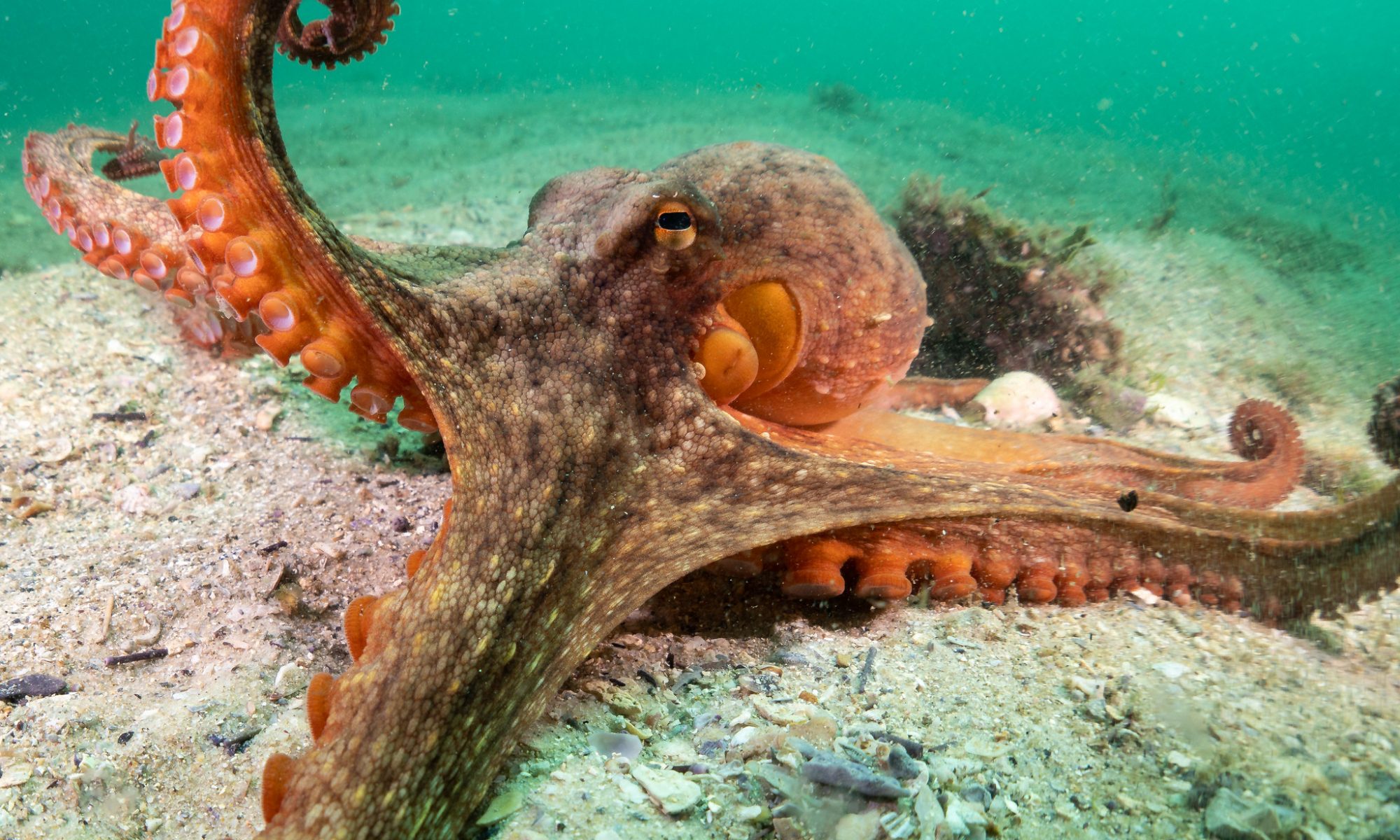Soil is the thin layer of material covering the earth’s surface and is formed from the weathering of rocks. It is made up mainly of mineral particles, organic materials, air, water and living organisms—all of which interact slowly yet constantly. Most plants get their nutrients from the soil and they are the main source of food for humans, animals and birds. Therefore, most living things on land depend on soil for their existence. Soil is a valuable resource that needs to be carefully managed as it is easily damaged, washed or blown away. If we understand soil and manage it properly, we will avoid destroying one of the essential building blocks of our environment and our food security.
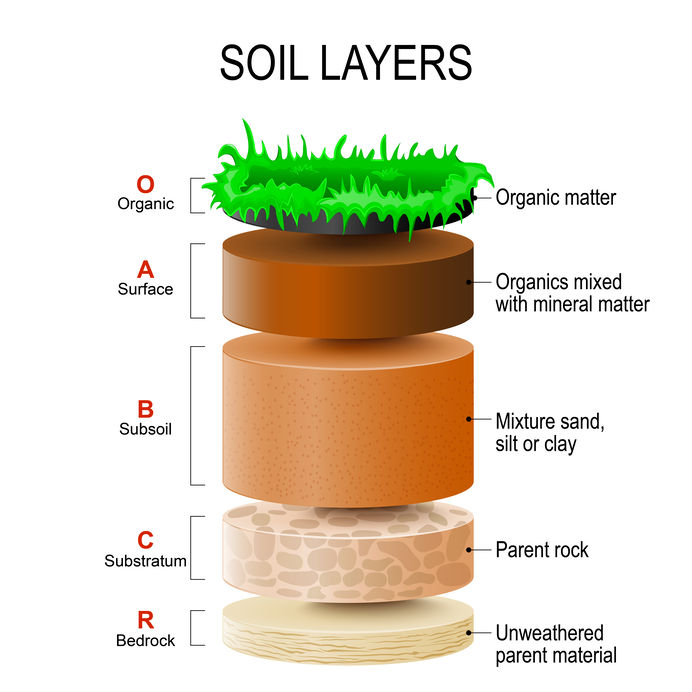
-
A horizon—humus-rich topsoil where nutrient, organic matter and biological activity are highest (i.e. most plant roots, earthworms, insects and micro-organisms are active). The A horizon is usually darker than other horizons because of the organic materials.
-
B horizon—clay-rich subsoil. This horizon is often less fertile than the topsoil but holds more moisture. It generally has a lighter colour and less biological activity than the A horizon. Texture may be heavier than the A horizon too.
-
C horizon—underlying weathered rock (from which the A and B horizons form).
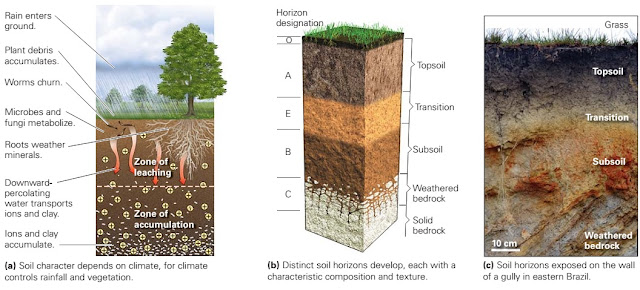
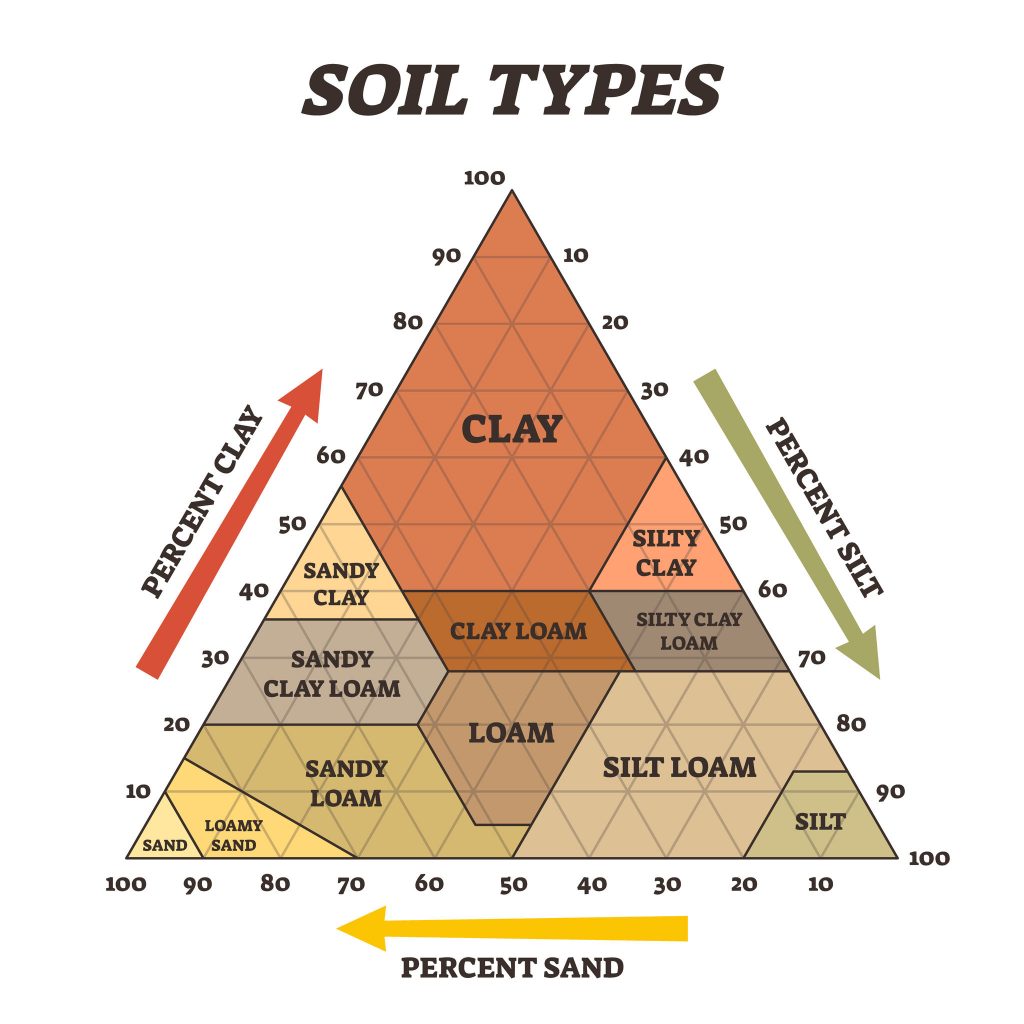
A soil texture triangle is determined by the proportion of sand, silt and clay. Texture is important because it influences:
- the amount of water the soil can hold
- the rate of water movement through the soil
- how workable and fertile the soil is.
Factors affecting soil formation
-
physical weathering—breakdown of rocks from the result of a mechanical action. Temperature changes, abrasion (when rocks collide with each other) or frost can all cause rocks to break down.
-
chemical weathering—breakdown of rocks through a change in their chemical makeup. This can happen when the minerals within rocks react with water, air or other chemicals.
-
biological weathering—the breakdown of rocks by living things. Burrowing animals help water and air get into rock, and plant roots can grow into cracks in the rock, making it split.
-
parent material—minerals forming the basis of soil
-
living organisms—influencing soil formation
-
climate—affecting the rate of weathering and organic decomposition
-
topography—grade of slope affecting drainage, erosion and deposition
-
time—influencing soil properties.
Parent materials
Soil minerals form the basis of soil. They are produced from rocks (parent material) through the processes of weathering and natural erosion. Water, wind, temperature change, gravity, chemical interaction, living organisms and pressure differences all help break down parent material. The types of parent materials and the conditions under which they break down will influence the properties of the soil formed. For example, soils formed from granite are often sandy and infertile whereas basalt under moist conditions breaks down to form fertile, clay soils.
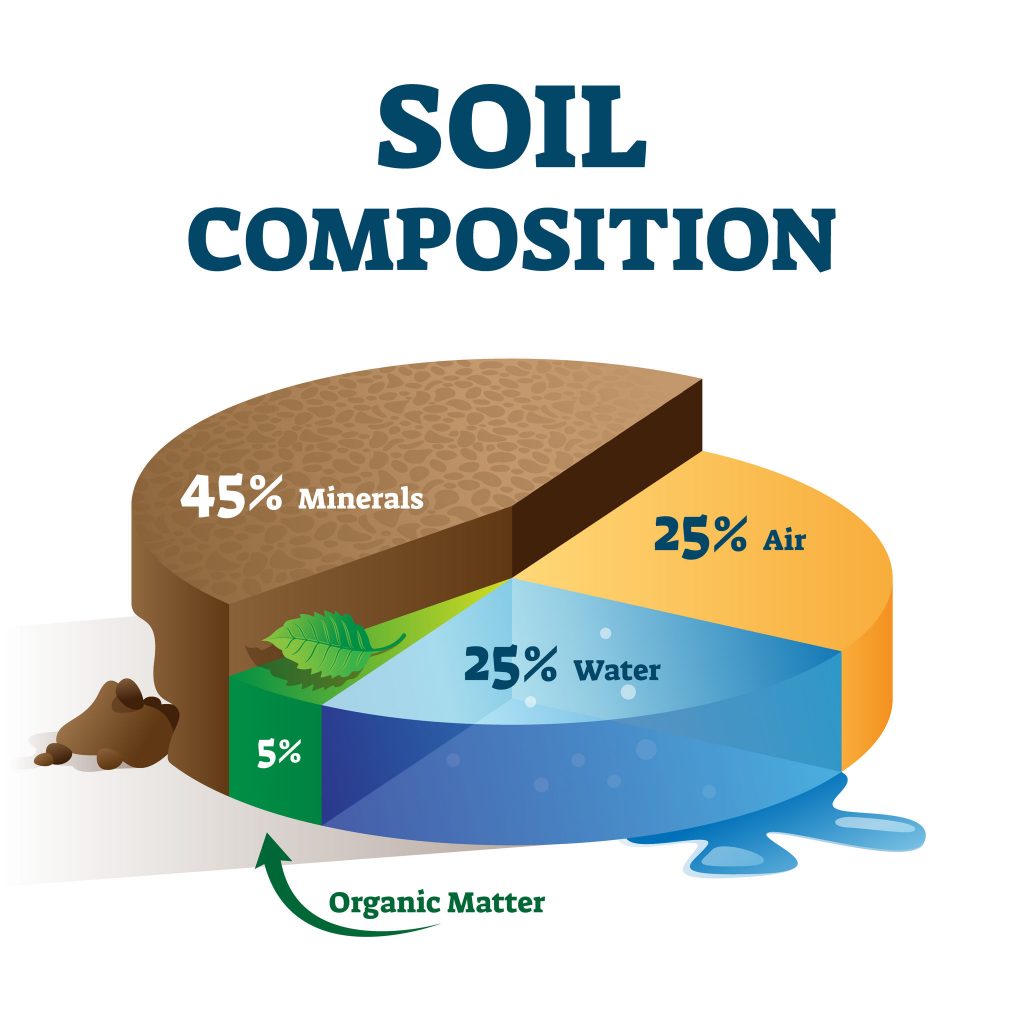
Organisms
Soil formation is influenced by organisms (such as plants), micro-organisms (such as bacteria or fungi), burrowing insects, animals and humans. As soil forms, plants begin to grow in it. The plants mature, die and new ones take their place. Their leaves and roots are added to the soil. Animals eat plants and their wastes and eventually their bodies are added to the soil. This begins to change the soil. Bacteria, fungi, worms and other burrowers break down plant litter and animal wastes and remains, to eventually become organic matter. This may take the form of peat, humus or charcoal.
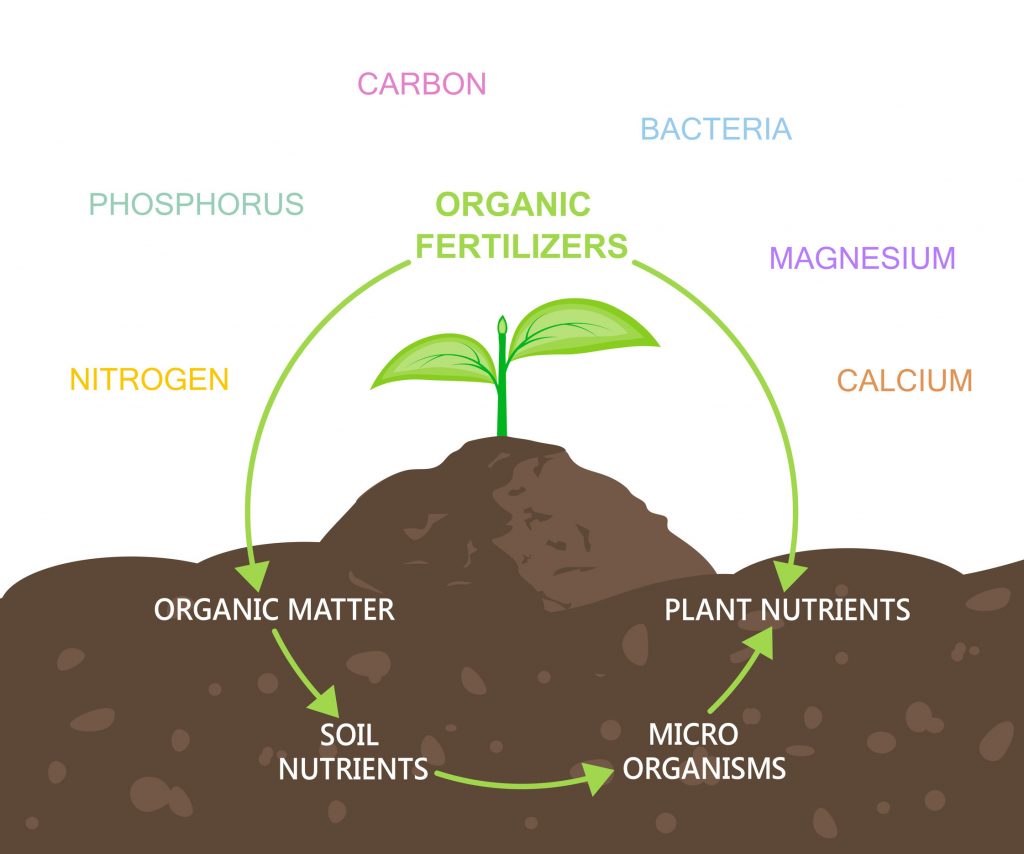
Erosion
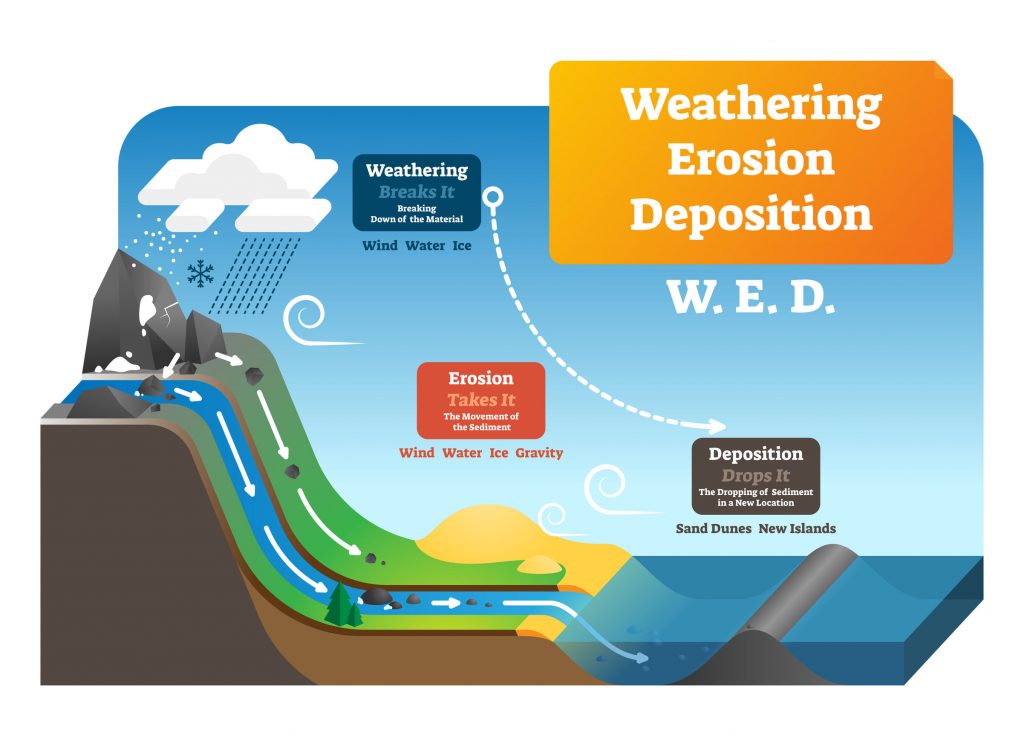
Climate
Topography
-
alluvial (water transported)
-
colluvial (gravity transported)
-
aeolian (wind transported) soils.
Soil structure refers to the way soil particles group together to form aggregates (or peds). These aggregates vary in size and shape from small crumbs through to large blocks.
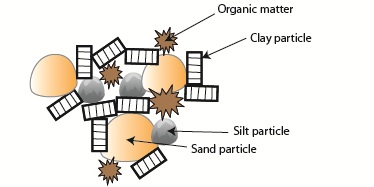
Good structure is important, as it allows water to soak into the soil and excess water to drain away. It also allows air movement through the soil. Soil, air and water are vital for healthy plant growth and nutrient supply.
Peds are made up of mineral particles (clay, silt, sand) and organic matter. Peds are held together by the electrical charges on the surfaces of the minerals and organic matter.
Clays and soils with a lot of organic matter are more likely to form strong peds. Sandy soils or soils with little organic matter often have little or no ped development.
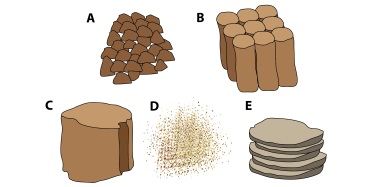
Peds are described by their shape : a) blocky, b) columnar, c) massive, d) single grain, e) platy.
Activities
How to determine soil texture
- Take about 2 tablespoons of soil in one hand and add water, drop by drop, while working the soil until it reaches a sticky consistency.
- Squeeze the wetted soil between thumb and forefinger to form a flat ribbon.
- Determine the texture based on the length of the ribbon that can be formed without breaking — see following table.
| Texture | Length of ribbon (mm) | Soil properties and management implications |
| Sandy | <15 | Little resistance to root growth High infiltration rate Low plant available water |
| Sandy loam | 15-25 | Root growth not restricted, but highly susceptible to mechanical compaction May be hard setting Moderate infiltration rate Moderate plant available water |
| Loam | 25 | Root growth not restricted Moderately susceptible to mechanical compaction Moderate plant available water Moderate infiltration rate |
| Silty loam | 25 | Root growth not restricted Moderately susceptible to mechanical compaction Moderate plant available water Low to moderate infiltration rate |
| Clay loam | 40-50 | Root growth not restricted Moderately susceptible to mechanical compaction Moderate to high plant available water |
| Clay | 50-75 | Root growth frequently restricted Moderately to highly susceptible to mechanical compaction Some restriction on water movement leading to periodic waterlogging Moderate to high plant available water |
| Heavy Clay | >75 | Root growth moderately to severely restricted High susceptibility to mechanical compaction Water drains very slowly except in self-mulching soils |
Find out whats new for you and your students with the latest Blogs from Australian Environmental Education.
- Exploring the Underwater World
- World Wetlands Day 2025
- Violet Snails, nature’s floating marvels
- Top 10 webpages
- A Sustainable Christmas: Spreading cheer without costing the earth
Follow Australian Environmental Education on Facebook

